| Back To News |
Review: f-stop’s Lotus is a mean, modular camera bag for weekend backcountry adventures
posted Wednesday, July 1, 2015 at 1:57 PM EST
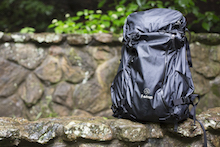
Photography backpack manufacturer f-stop is the self-proclaimed ‘global leader for adventure and outdoor photography packs’. Until now, I couldn’t vouch for that, as I’ve never owned an f-stop bag. However, as part of our bag review series, we reached out to f-stop and within a matter hours they offered up a bag for review, the Lotus, the latest bag in its growing Mountain Series.
At the time of receiving the bag, it had not been announced to the public. Rather than quickly getting out a sad excuse for a review, we wanted to put it to test in some of the most challenging environments to see if it could truly live up to the verbiage f-stop includes in its marketing material.
To do that, we took the bag on a weekend backpacking adventure that would put even the most durable outdoor bags to the test, let alone a pack meant to hold and protect both photography gear and enough equipment for a weekend backpacking trip.
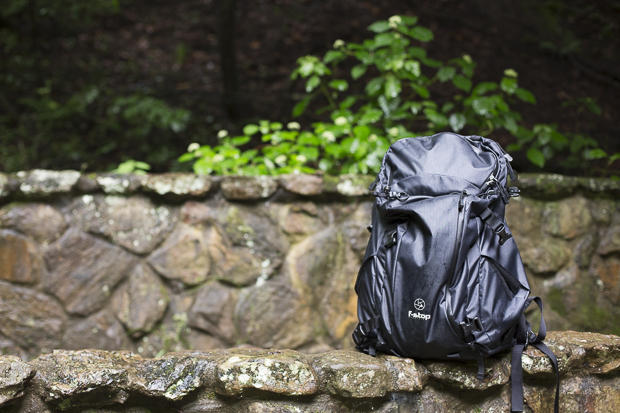
Specifically, the backpacking trip consisted of two days of hiking, 15 miles in total, in Hocking Hills, Ohio. While 15 miles in the Midwest over two days doesn’t sound rough, it’s a different story when over 6” of rain fell over those two days, making everything a muddy, soggy mess and leaving the trails looking like rivers, more suitable for travel via kayak than by foot.
With the weather conditions for context, we can get into the review itself. Following in the footsteps of previous and making way for future reviews, we’ll be breaking down the details of the bag in terms of ‘First Look’, ‘Design and Materials’, ‘Observations’ and ‘Overview’, each of which will be further facetted by various features and capabilities the bag offers.
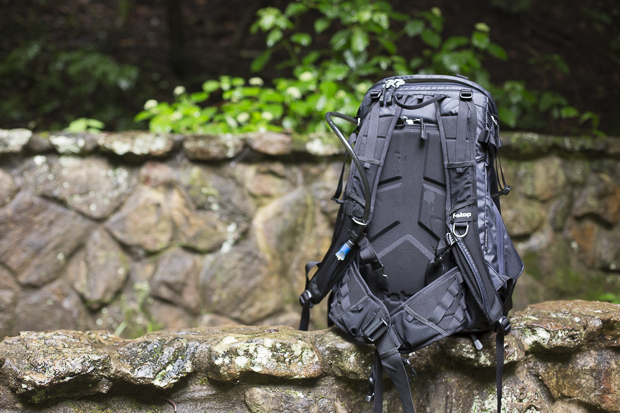
First Look
Upon removing the bag from the box it was delivered in, I couldn’t help but notice the streamlined aesthetics what is feature-robust adventure pack. The bag I received was black, just one of four colors f-stop has carefully chosen for its Mountain Series lineup. Considering the zippers and bag accents are black, this assisted in creating the considerably minimal aesthetic, but even in the other color options, the Lotus keeps the same, slim shape with minimal external components, partly aided by the light, but rigid internal aluminum frame.
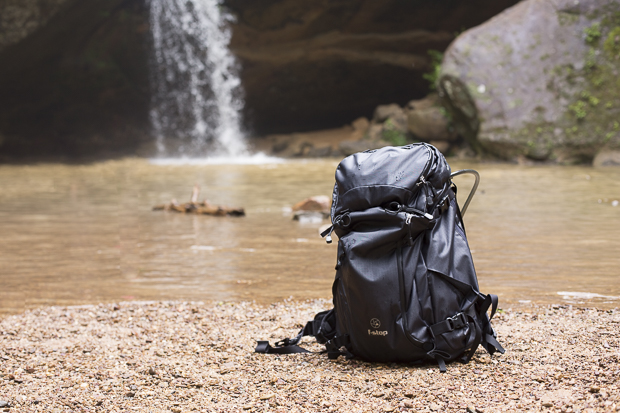
At 32 Liters, the Lotus is the smallest pack in f-stop’s Mountain Series line-up. You won’t be going on any week-long adventures with the Lotus, but for day trips it’s perfectly sized and so long as you pack light (or if you can share the weight with a partner), you can easily get in a weekend backpacking trip, as we did.
The dimensions of the bag are as follows: 20.5”H x 13”W x 11”D (52cm x 33cm x 27.9cm). Empty, the bag comes in at 3.3lbs (1.5kgs), which isn’t quite ultralight status, but more than light enough for those who aren’t counting every ounce in the backcountry.
Design and Materials
As previously mentioned, the build quality and performance of each bag will be multi-faceted, as each bag offers its own unique set of features, components and capabilities.
Internal Camera Units (ICUs)
For the Lotus, the most significant aspect to mention before diving into the details of the Lotus is f-stop’s Internal Camera Unit (ICU) setup. Rather than creating each bag with its own set of internal baffling and structure for keeping your gear safe, f-stop relies on a more modular option that uses individual, padded camera cases that are designed to be universal within f-stop’s Mountain Series line-up.
These ICUs come in twelve different sizes, from the Micro Tiny ICU, designed for mirrorless cameras setups, to the Cine Master ICU, which is capable of holding rigged video gear, cine lenses and other accessories with room to spare. Naturally, each bag has its ICU limits, depending on how much internal volume there is. So, to help you figure out what ICU works with what bags, f-stop has provided a handy infographic.
At first glance, the ICUs might appear to be nothing more than a way to bring in more revenue and bump up the margins on f-stop’s camera bags, considering none of f-stop’s Mountain Series packs are a camera bag at all without one. I followed this line of thinking since I first came across f-stop packs some time ago. However, my outlook has taken a 180º since receiving the Lotus for review, which came with f-stop’s Medium Slope ICU unit.
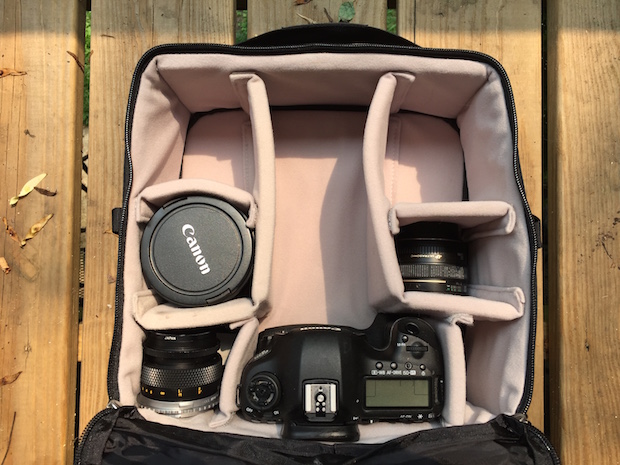
At face value, these ICUs create a more modular design for you to pick and choose what setup best fits a certain environment or adventure. After spending time using one though, the true brilliance of this modular design shines through.
In addition to the customization of your camera setup on a given day, the ICUs also create a safe and convenient way of storing your gear when it’s outside the bag. If you have the capital and don’t mind dropping a little on the ICUs, you could easily get two or three and make each one gear-specific, so come time to shoot, you can just grab the appropriate bag from your closet, secure it in the bag and you’re good to go – no need to go searching for gear and meticulously trying to organize things last minute.
Another benefit of the ICUs is that it allows your f-stop camera bag to be used for far more than just camera gear. If you want to leave your camera behind, you can just remove the ICU and utilize all of the internal volume for backpacking/hiking adventures.
Materials
The f-stop Lotus Mountain Series pack is made up of a collection of materials, each of which is chosen for a designated purpose and placed in a designated area of the bag. The weather-resistant shell is made up of an oxford-weave ripstop nylon — the same material used in parachutes and hot air balloons — coated in Advanta’s thermoplastic polyurethane film designed to shed water off the outside of the pack while letting the inside of the bag ‘breath’.
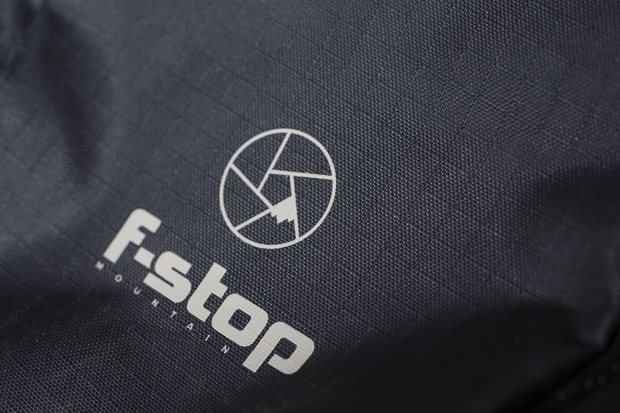
The base of the bag is reinforced with Hypalon, a trademarked polyethylene synthetic rubber, originally created by a Dupont subsidiary. The material is known for its incredible durability and resistant to extreme environments, proven by the fact it’s often used for hydraulic, fuel and vacuum hoses in vehicles.
One of the smallest, but most significant details of any bags are the zippers. Just as f-stop has with the outside material of the bag, they have also carefully chosen specific zippers for certain locations on the Lotus. On the front and top zippers, where water resistance is most important, f-stop utilizes YKK® Aquaguard® zippers, which are designed with a rubber shield over the interlocking teeth of the zipper to prevent water from entering the bag.
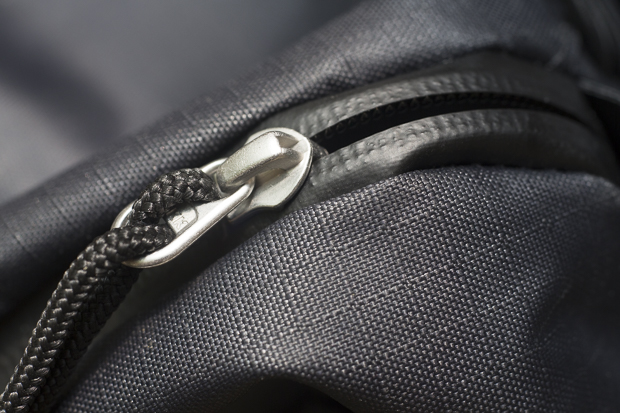
Elsewhere on the bag, f-stop uses YKK® heavy gauge zippers in varying sizes: larger-sized to enter the main compartment from both the rear panel and the top panel, and smaller-sized for the side compartments.
For compression, the Lotus uses plastic buckles that are quick to snap in place and easy to unbuckle, and velcro sections on the side that keep the side pockets flat against the bag until the space is needed. Lastly, two shock cord straps provide a secure mounting point for ice picks or trekking poles.
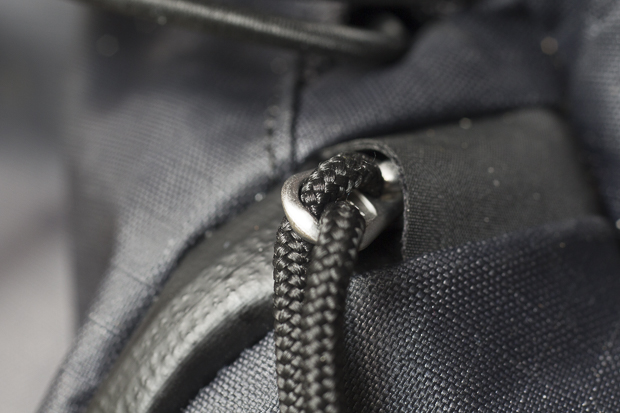
Observations
Now that we have the design and materials of the bag laid out, it’s time to get to how the bag performed.
The Lotus, as with all bags in f-stop’s Mountain Series, is touted as having ‘unprecedented weather-resistance’. This means that a light rain would likely be fine, but it isn’t suggested that you take the bag, without a rain cover, into a full-fledged storm. At the time of review, I didn’t have a rain cover for the Lotus. I could’ve contacted f-stop and they would’ve very likely sent it my way, but I figured if we were going to test the pack, we’d put it under the most extreme environment possible, even if the situation goes a little above and beyond what f-stop claims the bag is capable of.
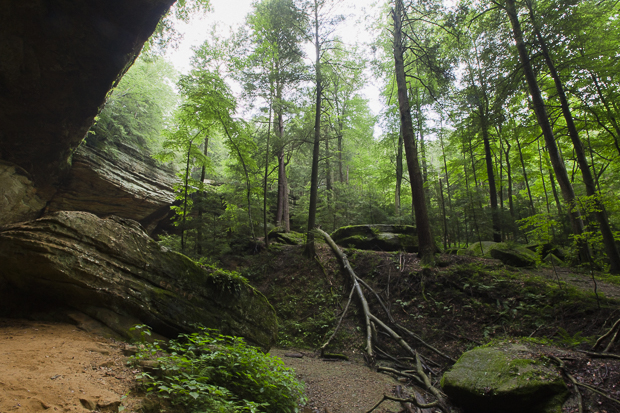
As previously mentioned, the f-stop Lotus bag went with my significant other and myself to Hocking Hills, Ohio, where we hiked through a number of trails over the course of a weekend. We hiked roughly 15 miles in total, 10 of which were done in an absolutely torrential downpour, totaling over 6”.
Inside my bag, my Canon 5D Mark III, Canon 50mm f/1.4, Canon 16–35mm f/2.8 II, Canon 70–200mm f/2.8 IS and other gear was packed safely inside f-stop’s Medium Slope ICU. On top of the ICU was a small pack of clothing, my Nemo Astro Insulated sleeping pad, and my Marmot Minimalist 55º sleeping bag. Elsewhere in/on the bag was a first aid kit, food, tent poles/stakes, a 2-liter hydration bladder and other hodgepodge gear.
Real World Observations
Knowing now almost every detail of the bag, what environment it was tested in and what I was carrying, it’s time for observations now that I’m back home and out of the rain. Remember, this is a review, which is, by design, subjective and based on my own thoughts and experience with the bag.
Thoughts on Materials
The materials of the bag are stunning. Everything seems to be placed perfectly to provide as safe an environment as possible for your camera gear and other gear inside the bag. The bottom of the bag is as durable as almost anyone will need, even in the most difficult terrain. The outside of the bag repels water as it’s designed to and the waterproof zippers work much better than I was anticipating, especially when tucked inside their designated pockets (shown in image above).
The larger zippers, on the other hand, didn’t offer the same kind of protection. For the top entry of the main compartment, the zippers are tucked beneath a fabric lip, of sorts, which I presume is designed to carry the rain over the non-sealed zipper. The problem is, the lip doesn’t entirely cover the zipper, especially when the pack is filled to the brim with gear. Towards the end of our hiking adventure, I noticed water had leaked through the large zipper, leaving roughly an inch ring of dampness around where the zipper is stitched to the bag.
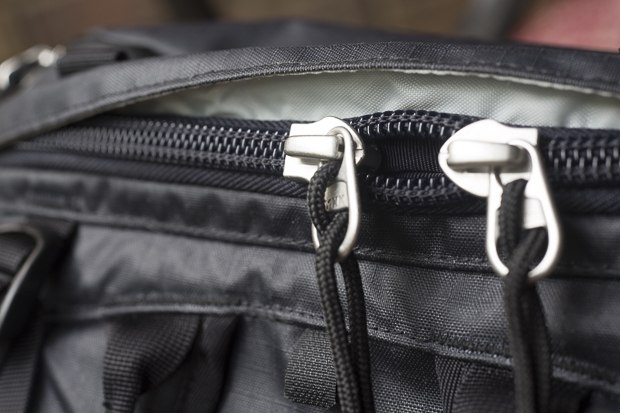
Similarly, the very top compartment, where I was holding my snacks, headlamp and first aid kit, became damp on the inside. This could’ve been due to the zipper, which is supposed to be waterproof, or the coated ripstop nylon might’ve let moisture through.
The side pockets, which don’t have waterproof zippers, stayed almost entirely dry, which came as a bit of a surprise. The front pocket, which does have a sealed zipper, also stayed almost entirely dry. In all three pockets, there was some dampness when all was said and done, but that could’ve very easily been the humidity and the fact I had opened it out in the rain to check.
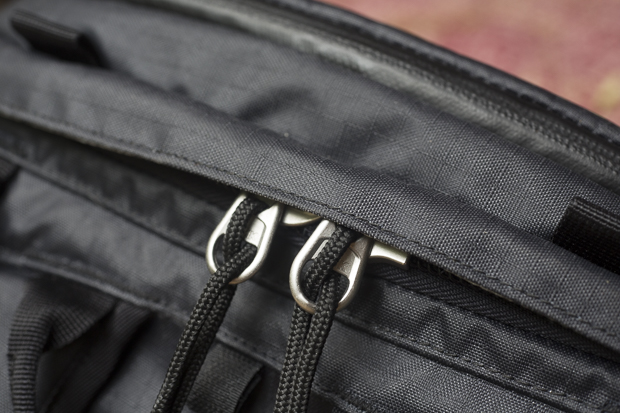
Considering I put the bag through far more rain than f-stop ever intended for it to be used in without a rain cover, it’s nothing short of incredible that the bag was as dry as it was. The ICU that housed my camera gear was bone dry, which left my jaw slightly above floor level when I took the ICU out of the bag.
Compartments and Functionality
The Lotus offers just enough functionality on the outside of the bag, such as the shock cord loops and external buckles, to improvise gear on the go. As anecdata (anecdotal data), my shoes became a muddy mess halfway through the first day of hiking, which prompted me to remove them in hopes that I wouldn’t get blisters. I opted to go barefoot through some of the trails and attached my disgustingly muddy shoes to the shock cord loops. The bag quickly became covered in mud, but with the help of rainfall, the mud just slide off the bag. In fact, when the rain subsided, my shoes and bag were completely clean, without a drop of mud in sight.
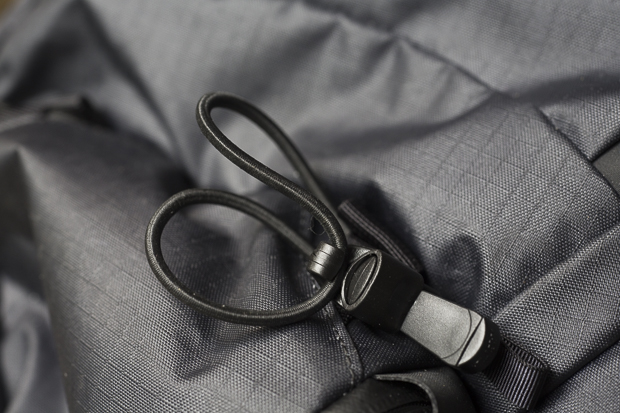
Two complaints I have about the functionality of the Lotus have to do with the use of hook and loop fasteners, more commonly referred to as Velcro.
First off, the top-most compartment, which held my snacks and headlamp, uses a mesh netting to secure stuff inside. The problem is, it uses Velcro, right down the middle of the mesh pocket, which greatly diminishes what can be put in it. I would’ve preferred to see another zippered pocket or two smaller pockets without Velcro.
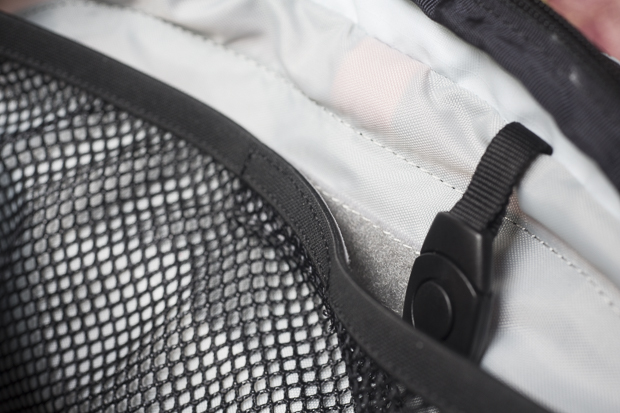
Similarly, the use of Velcro on the side-pockets confuse me. Sure, it helps keep the sides of the bag closed when there’s nothing in the pockets, but the angle at which they’re stitched on makes it difficult to put larger items in the pockets. When you do have larger items in the pockets, the Velcro awkwardly sticks out and attracts all sorts of burrs, mud, sand and other organic material that the bag is designed in every other regard to not hold onto.
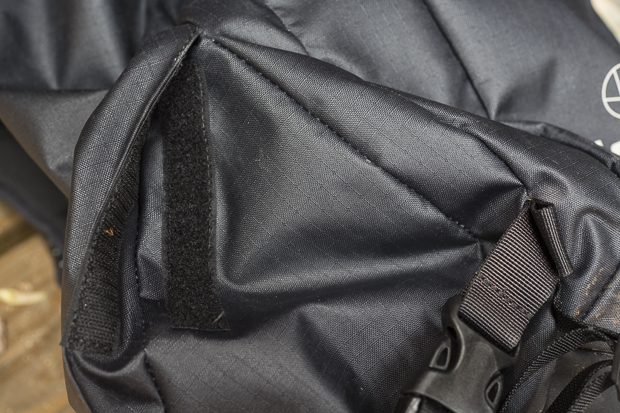
On the whole, Velcro just seems to be an awkward material choice when f-stop was so particular about every other material for the bag. It might just be me, but Velcro, no matter how thick or how well it holds, just feels like a cheap material. And nothing about this bag, except the Velcro, feels cheap.
With the complaints of the Lotus out of the way, it’s time for the praises. I’ve already echoed my thoughts throughout this review, but here I’ll dive into the smaller details that didn’t fit elsewhere.
As with most adventure packs, the Lotus has a number of handy features cleverly hidden on its shoulder straps and waist belt, both of which are part of the Lotus’ very customizable suspension system.
One of these hidden features is that the buckle on the sternum strap has an integrated whistle. It’s a minute feature, but it reduces the need to carry a separate whistle into the backcountry, which is always welcomed.
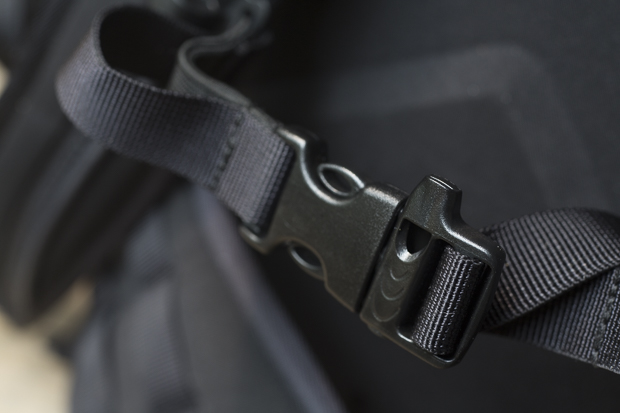
Another is a little clip for the tube of your hydration bladder to snap into. It’s a little luxury that makes life a little easier on the trail.
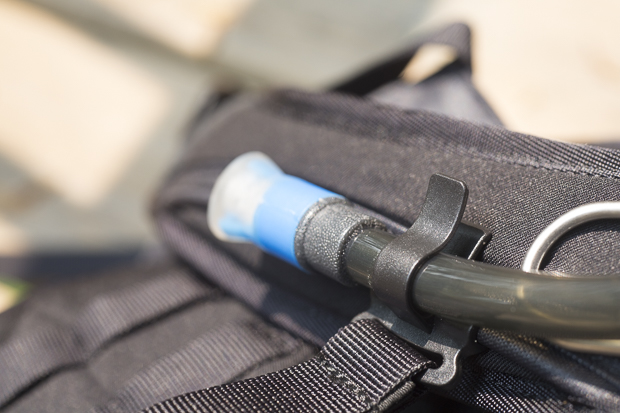
On the shoulder straps are two elastic mesh pockets. I’m not sure exactly what they’re for, but I used one of mine to hold my Leatherman Skeletool while hiking and the other could easily be used to hold another tool or a thin snack. They’re a nice addition to space that would otherwise go unused.
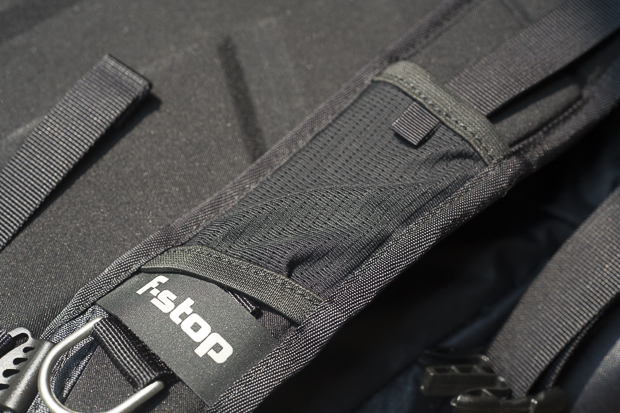
Also on the shoulder straps are two D-rings. These can be used for almost anything you can think of. I used one as a secondary mounting point for my hydration bladder’s tube on this particular hike.
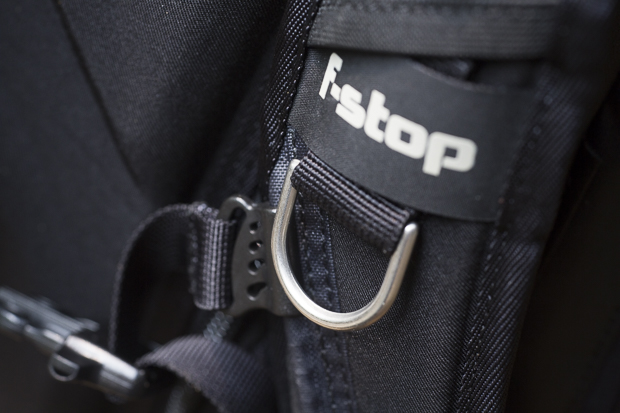
The waist belt is full of goodies. Most notably, the waist belt has angled MOLLE webbing, which is as universal of a mounting system as you’re going to find. Thousands of third party bags, packs, and other gear can be attached for easy access.
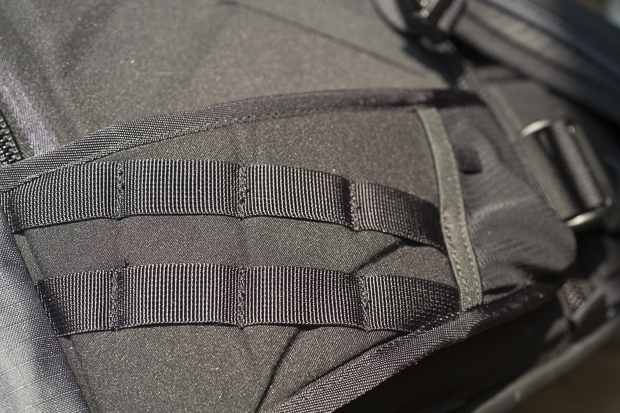
Another feature of the waist belt is a small pocket on both sides, which could easily hold a small snack, tissues or extra paracord.
Comfort
When hiking distances, be it a few miles or a hundred miles, comfort is more important than anything (besides sustenance). It’s important to realize though, that comfort is more dependent on properly sizing your bag and properly packing your bag than anything else. If you get the wrong volume for your body size, you’re going to have a bad time. If you get the right size and properly pack your bag, it’s these following details that will further improve your comfort.
Another aspect of the ICU unit that improves its value is one I purposefully left out until now. That is, f-stop has made sure to design the bags so that the ICU units, regardless of size, will be close to and towards the middle of your back. This is the proper way to pack your gear, and by f-stop doing this kind of thinking with the design, it means end-users will be able to more easily pack properly when they go on an adventure.
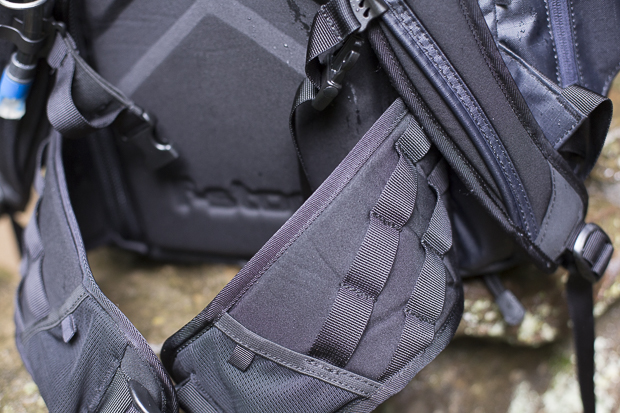
Looking at the externals of the bag, it’s evident f-stop didn’t cut any corners in testing multiple back pad, shoulder strap and waist strap designs, all of which are made from Soft Flex injection molded ethylene vinyl acetate (EVA).
The back pad is molded to not only provide airflow and padding for your back, but also act as a soft, impact-absorbing buffer between your gear and the ground.
The shoulder straps and waist belt are shaped well to fit most any body type. The waist belt is thick enough to disperse the weight over a larger surface area, but not so big or thick to be a pain.
In the 15 miles hiked, I can’t think of one time where I had to adjust my bag or take a break because of it. As the best of packs should, it just became an extension of me, even with 35lbs worth of gear inside.
Overview
The Lotus might be an adventure pack meant for the backcountry, but it wouldn’t at all be out of place when traversing through the city streets. It’s durable, comfortable, looks sleek and is modular enough to get the job done regardless of how mild or wild your adventures may be.
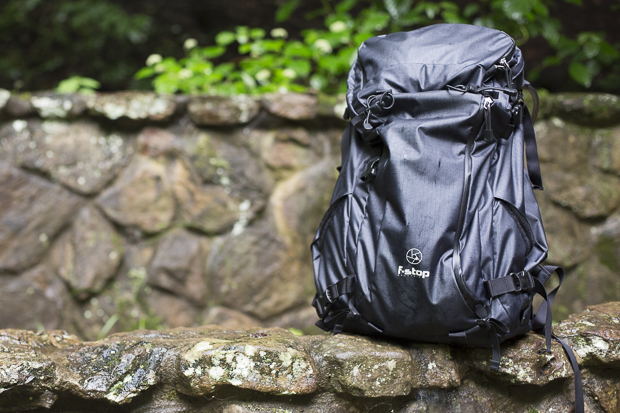
You can purchase the f-stop Lotus for $200. This does not include any ICUs, which range in size and price, from $45 for the Micro Tiny ICU to $89 for the Large Pro ICU. If you plan on taking your Lotus through heavy rain, you’ll want to not do what I did and purchase yourself a rain cover, which comes in at $19.
If you have any further questions regarding the Lotus or how the review was conducted, leave it in the comments below and I’ll get back to you as soon as possible.